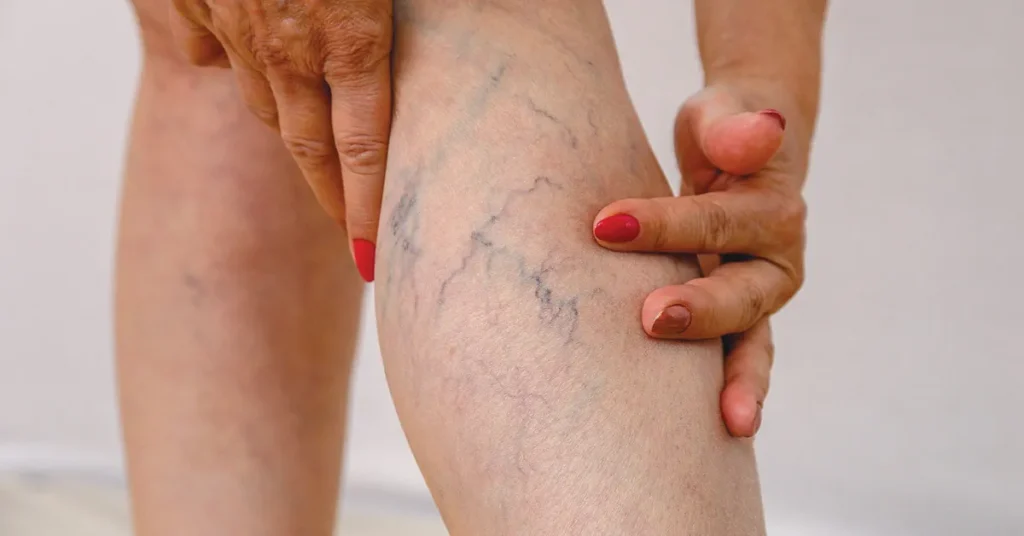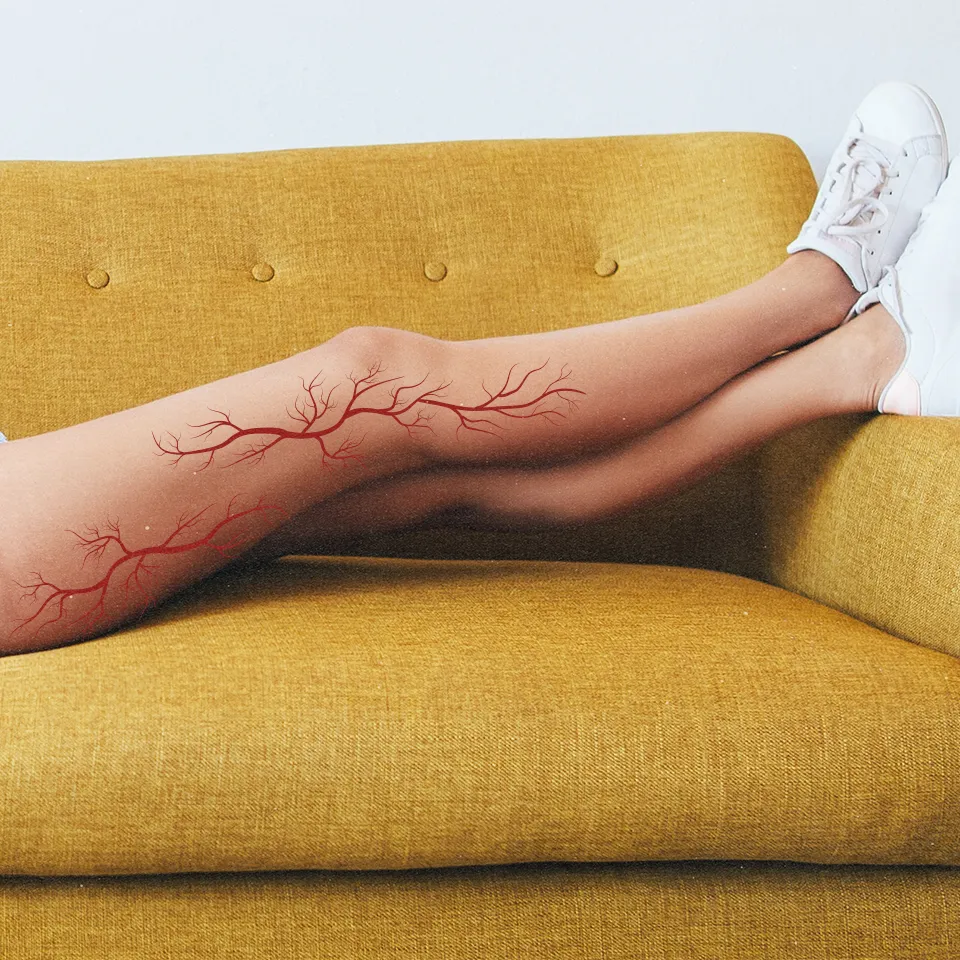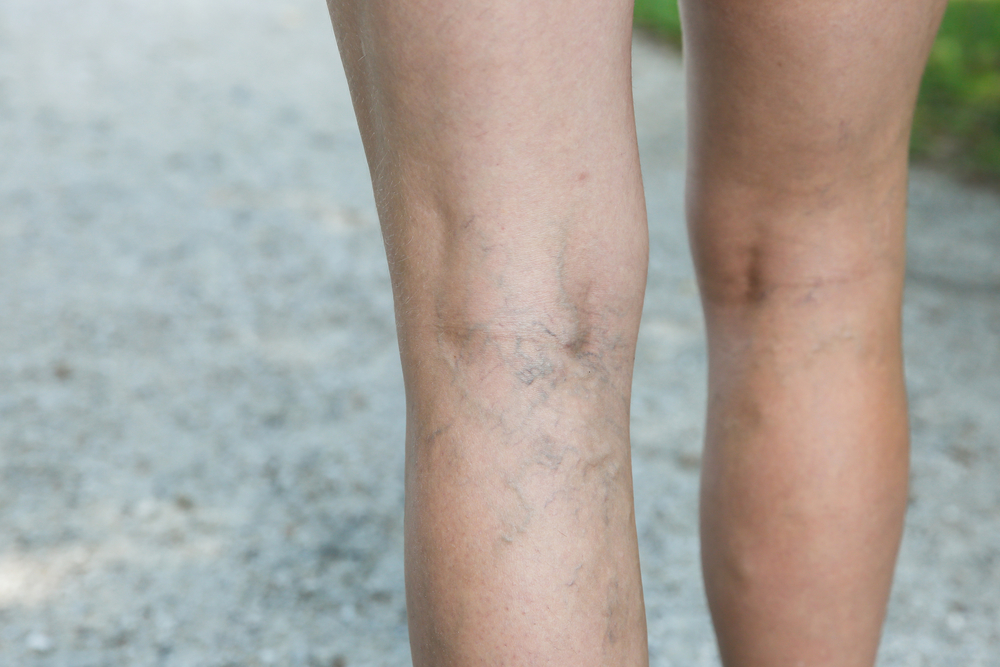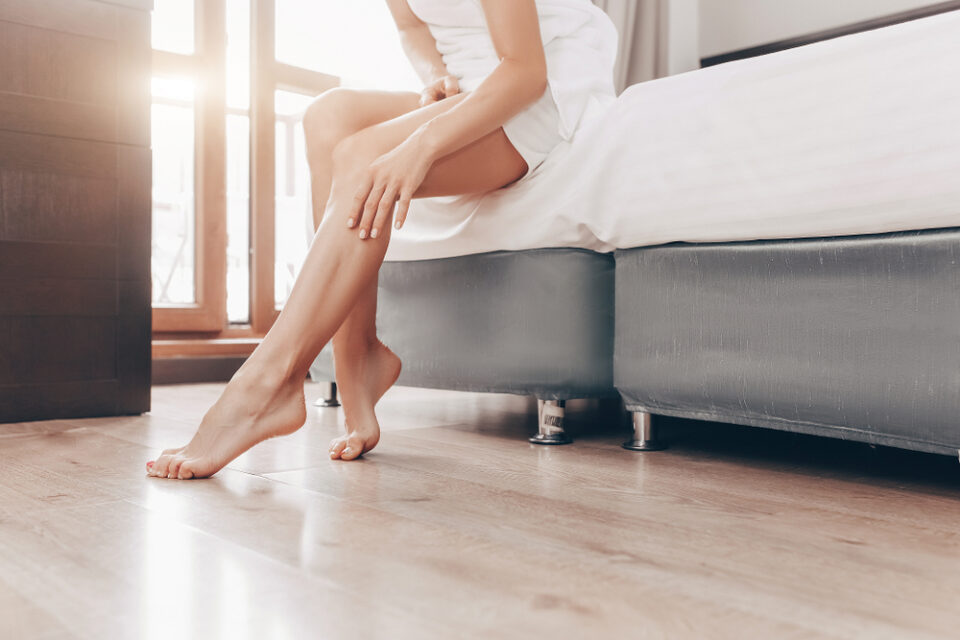We are talking about varicose veins when the vein is enlarged and has nodular expansions. Any vein can be varicose, but the superficial veins of the legs are most often affected, in which the pressure is high when the person is standing.
This problem often affects the veins of the lower extremities. It is due to the increased pressure during prolonged standing and walking, during which the valves of the veins do not work properly and the blood does not move as usual.
Although there are no exact data, it is believed that almost half of the adult world population has a problem with venous circulation. Violation of the function of the venous valves is one of the main reasons for the appearance of varicose veins. The weakening of the wall of the venous blood vessels, as well as the increase in venous pressure, can also contribute to the appearance of varicose veins.
At this point, you need to know that spider veins may disappear in a few weeks, but varicose veins don’t go away without proper treatment. Even when you regularly treat them, it may take up to a few months to improve the situation. What you can do is find a great vein clinic to treat your condition.
Causes of varicose veins
There are several risk factors and causes of varicose veins, such as:

1. Genetics
If your close family member has varicose veins, your risk of developing the same condition is increased. So if you have a family history of varicose veins, especially if you are a woman and have female relatives with the condition, start taking care of your veins as soon as possible.
2. Your age
The risk of varicose veins increases as you grow older. Over time, in a portion of the population, the vein valves that help regulate normal blood flow become damaged and do not function at full capacity. Therefore, part of the blood, instead of being directed to the heart, lags behind in the superficial veins.
3. Overweight and obesity
Increased body weight puts extra pressure on the venous system, which leads to damage to the valves and compromises the venous blood flow to the heart. Of course, being overweight does not mean that you will surely develop varicose veins.
Being overweight is a risk factor, but that does not mean that thin people are not in the risk group.
4. Prolonged sitting, standing, or resting
The less you move, the harder it is for your veins to pump blood to your heart. Prolonged standing and sitting in one place significantly increase the risk of varicose veins. Therefore, if your work requires prolonged sitting or standing, try to move for a few minutes every hour.
This is especially true for remote workers, who often do not have a good chair at all and use parts of the furniture while they work. Of course, it also applies to all workers, in any industry.
5. Pregnancy in women
Pregnancy is a state in which a series of different changes occur in our body. Since a baby is growing inside a woman, her organs, as well as blood vessels, adapt to the situation. Of course, the baby presses on certain organs, and the volume of pumped blood in the system increases.
In some women, varicose veins do not appear during the entire pregnancy, while others have had them since the first trimester. Sometimes they disappear at different stages of pregnancy, but it can happen that they remain even in the postpartum period.
Symptoms, causes, occurrence, and treatment of varicose veins

Varicose veins occur more often in women and are linked to heredity in the family. Other associated factors are pregnancy, being overweight, prolonged standing, aging, menopause, leg injury, or any process that complicates the circulation in the abdominal cavity. Less commonly, the veins are enlarged as a result of a blood clot in a deep vein.
Varicose veins can be blue or dark purple, bulge out like ropes, and in some cases feel painful or itchy around the enlargement.
Diagnosis is based on physical examination, and inspection of the lower extremities after standing for a few minutes to note swelling and discoloration of the skin. This is a visual examination, and it is usually followed by an x-ray or ultrasound examination.
When it comes to treatment, surgery is the most effective method and provides almost instant solutions. The patient usually stays one to two days in the hospital, and then comes for regular examinations and bandages. Postoperatively, a compression elastic bandage is worn to ensure proper recovery. This method is known as vein stripping.
Of course, there are non-invasive treatments that usually include laser, radiofrequency therapy, or sclerotherapy. The treatment method is determined by the condition of your veins and your general physical health.
What you need to do is to perform regular checks. If some of your veins appear unusual, you need to monitor them for a few days, until you are sure everything is fine, or maybe you need to visit a specialist.
The earlier you spot the changes, the more efficient treatment would be. If something seems unusual, we suggest telling your family doctor, so you both can determine if specific treatment is needed. Sometimes they can send you to a specialist for examination until the diagnosis is determined.

Conclusion
If you haven’t had a problem with your veins before, that’s really good news. For prevention, try to constantly improve circulation and focus on proper nutrition and fluid intake. Wear comfortable shoes that do not disturb the natural balance of the body. Avoid tight, fitted pants, such as skinny jeans. For the prevention of varicose veins, comfortable clothing is recommended, which will not compress the leg veins.
And of course, be physically active. The least you can do for yourself is to walk at least once a day, at an average walking speed. In this way, you burn fat and calories and relieve your veins of the heavy load they carry.

